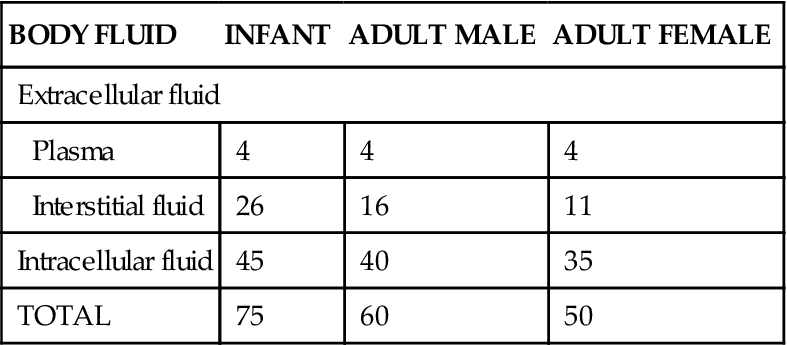
We used data obtained during experiments in volunteers, where BIA had been measured and isotonic and hypertonic electrolyte fluids were infused in volunteers. However, the relevance of using fluid shift calculations as a quality control of reported body volumes has never been studied.Ī comparison between the “textbook volumes” and those reported by BIA served as an example. The composition and amount of fluid administered determine direction and volume of fluid exchange, which are fairly well known for the literature. For this purpose, we applied a sodium and an osmolality equation that are dependent on correct sizes of the ECV and ICV to estimate the transcellular shift of water after a fluid challenge. In the present work, we study the usefulness of mass balance equations to examine whether a reported body fluid size is reasonable or more likely to be erroneous. It is unclear whether the textbook volumes or the BIA-derived volumes are correct. The typical finding with BIA is that the ECV is larger than 20% and that the ICV is smaller than expected, making the ECV:ICV ratio to be 1:1.5 instead of 1:2.
Body fluid compartments percentages software#
The software used with the BIA is calibrated using isotope methods but the obtained values differ from the “textbook volumes”. These fractions have been challenged by studies, where electric bioimpedance analysis (BIA) has been applied. Medical textbooks teach that the ECV represents 20% of the body weight (BW), while ICV corresponds to 40% of the BW based on indicator–dilution techniques. The body fluids are traditionally divided into an extracellular volume (ECV) and an intracellular volume (ICV). The “textbook” ECV and ICV volumes but not the BIA-derived volumes were consistent with the fluid shifts obtained by two solute equations. By contrast, applying the BIA-derived ECV to the sodium equation implied that 3 L of water would be translocated from the ECV to the ICV once hypertonic saline was administered. By applying the “textbook” ECV, the sodium equation indicated that Ringer’s solution exchanged negligible amounts of water, while hypertonic saline withdrew 1.4 L from the ICV to the ECV. The sodium and osmolality equations correlated closely with respect to the translocation of water across the cell membrane ( r 2 = 0.86). Mean ICV measured with BIA was 22.3% of BW ( p < 0.05). The mean ECV measured with BIA was 24.9% of BW ( p < 0.05 versus the “textbook” volume). Simulations were performed, where deviating body fluid volumes were applied. The exchange of water between the ECV and the ICV was calculated according to a sodium equation and an osmolality equation. Methodsĭata was retrieved from 8 healthy male volunteers who received 25 mL/kg of Ringer’s solution or 3–5 mL/kg of hypertonic (7.5%) saline over 30 min after the ECV and ICV had been estimated by BIA. We estimated the transcellular exchange of water by calculating solute equilibriums after fluid challenges to examine whether the BIA or the textbook volumes are likely to be most correct. This fluid is distributed between blood plasma, interstitial fluid, and intracellular fluid with the following proportions: Body Fluid Compartment: Proportion (%) of Total Body Water (TBW): Blood Plasma 6.6 Interstitial Fluid 33.0 Extracellular Fluid (ECF) 26.4 Intracellular Fluid 67.0 67.The extracellular volume (ECV) and intracellular volume (ICV) estimated by bioimpedance analysis (BIA) deviates markedly from the textbook volumes of 20% and 40% of the body weight (BW). For a typical 70 kg person, approximately 42 kg of this weight is water (which is equivalent to a volume of approximately 42 L of water).

Transcribed image text: Background Information: Body Fluid Compartments The human body is made up of roughly 60% water with dissolved ions in various body fluid compartments.


 0 kommentar(er)
0 kommentar(er)
